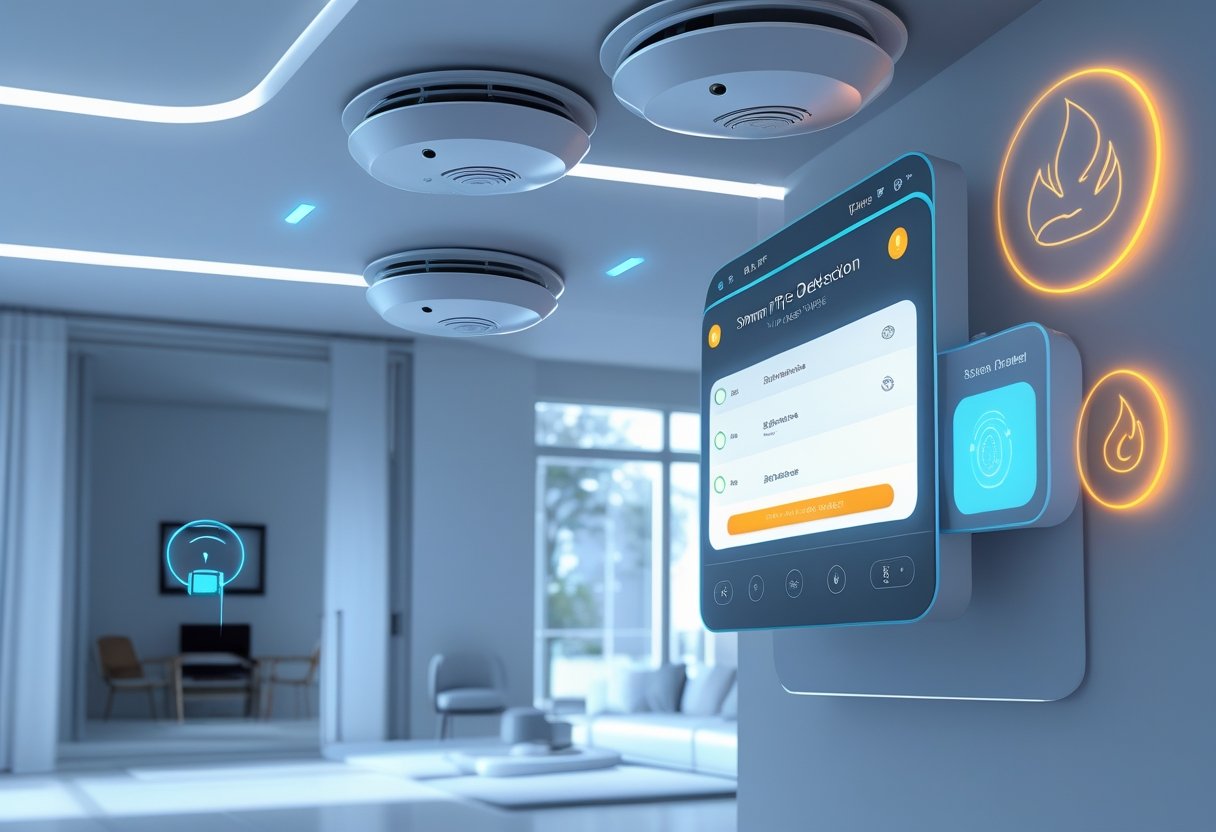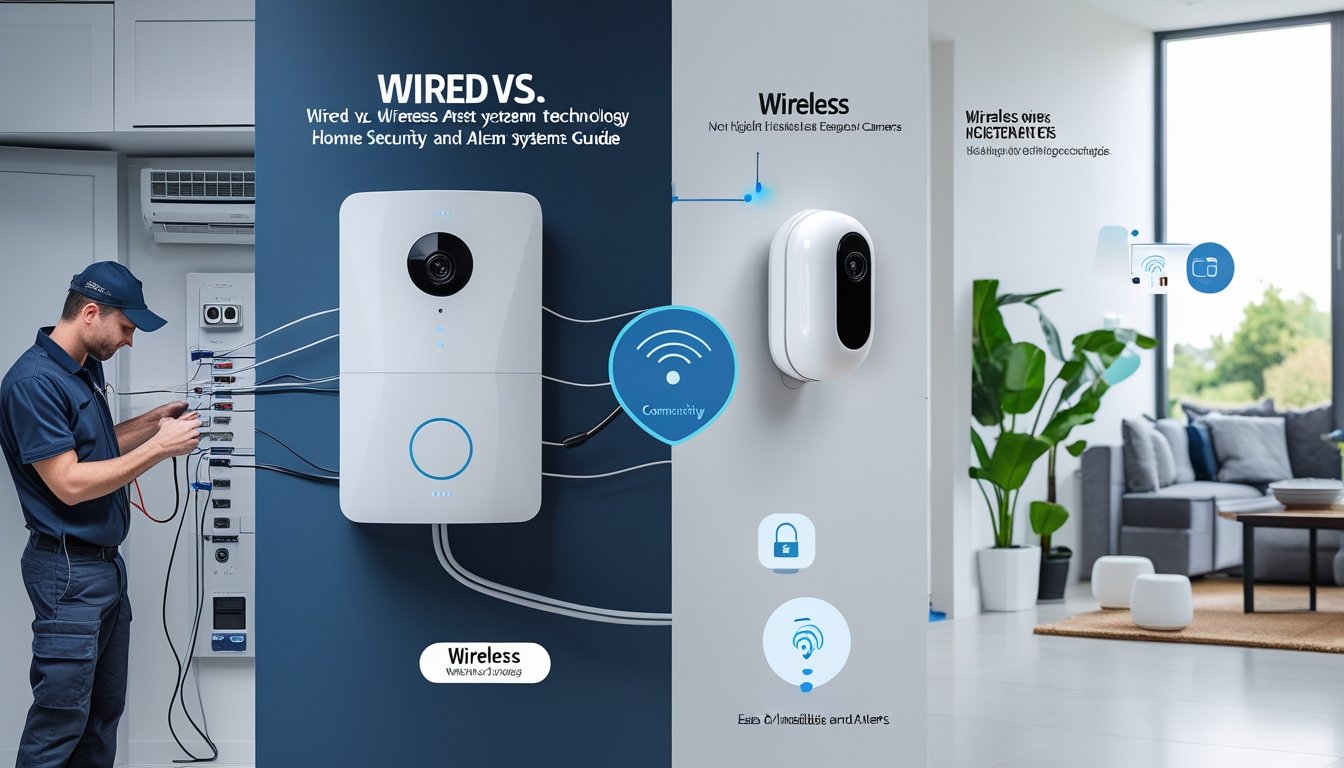In today's world, ensuring your home's safety goes beyond traditional security systems. Smart home security with fire detection provides an effective way to protect your family and property from potential fire hazards while integrating seamlessly into your daily life. With advancements in technology, you can now receive real-time alerts and monitor your home directly from your smartphone, giving you peace of mind whether you are at home or away.
Imagine knowing the moment smoke is detected or a temperature spike occurs, even when you’re not around. These systems not only notify you of emergencies but also allow you to manage devices remotely, enabling you to take action before a situation escalates. As you navigate your options in the greater Houston area, understanding the best features of smart fire detection can elevate your home safety plan.
Choosing smart home security options with integrated fire detection ensures a comprehensive approach to safeguarding your living space. Embracing these technologies empowers you to respond quickly to emergencies, potentially saving lives and minimizing damage to your home.
How Smart Home Security Systems Integrate Fire Detection
Smart home security systems seamlessly incorporate fire detection features to enhance safety. This integration enables real-time alerts and robust responses during emergencies, ensuring that you and your property remain protected.
Overview of Smart Home Security with Fire Detection
Smart home security systems combine traditional security measures with advanced fire detection technologies. These systems often include smoke alarms, heat sensors, and fire alarms that communicate with your home network. When one component detects a potential fire, it triggers alerts across your security devices.
An integrated system allows you to monitor fire risks remotely via smartphone apps. This functionality gives you peace of mind when you're away from home. Systems like these typically connect to a central hub that manages both security and fire alarm notifications.
Benefits of Integrated Fire and Intrusion Protection
Integrating fire detection with your home security system offers several vital benefits:
- Rapid Alerts: Integrated systems provide immediate notifications to your smartphone or smart home hub. This allows for quick responses during emergencies.
- Automated Responses: Upon detecting a fire, the system can activate sprinklers, shut down HVAC systems, or unlock doors for emergency personnel.
- Cost-Effectiveness: Combining fire and intrusion protection can reduce the need for multiple standalone systems, making it a budget-friendly choice.
You benefit from enhanced safety protocols by merging these two systems. Moreover, quicker emergency response is made possible with real-time data shared through your home automation network.
How Fire Alarms Work Within Smart Security Ecosystems
Fire alarms in smart security ecosystems operate using a combination of sensors and connectivity features. Smoke alarms monitor air quality for smoke particles, while heat detectors assess temperature changes. When a fire is detected, these devices trigger alerts that are sent to your smartphone or security monitoring service.
Advanced fire alarms can also connect to emergency services directly. This means that if a fire is detected, alert notifications are automatically sent to local fire departments. In addition, your surveillance cameras can activate, providing live feeds to verify the situation.
By incorporating fire detection into your smart home security, you enhance both convenience and safety, benefiting from an interconnected approach to protecting your property.
Types of Smart Fire Detection Devices
Smart fire detection devices enhance safety by integrating advanced technology with traditional fire detection methods. They not only detect smoke and heat but also provide real-time alerts and connectivity features for your home security system.
Smart Smoke Detectors and Alarms
Smart smoke detectors and alarms offer advanced functionality over traditional models. They connect to your home Wi-Fi network, enabling remote monitoring through your smartphone. When smoke is detected, these devices send alerts directly to your phone, allowing you to act quickly, even when you're away.
Many smart smoke alarms also feature voice alerts, which can provide specific information about the danger, such as "smoke detected in the kitchen." This clarity helps you take appropriate action without delay. Some models integrate with other smart home devices, such as smart locks, to enhance overall security.
Wireless and Wired Smart Fire Alarms
Wireless smart fire alarms are easy to install and can be placed in various locations throughout your home without complicated wiring. These devices communicate through radio frequencies, making them an excellent choice for larger spaces or homes with multiple levels.
On the other hand, wired smart fire alarms often provide more reliable connectivity and power. They are connected directly to your home's electrical system, reducing concerns about battery life. Many wired models come with battery backup options to ensure they remain functional during power outages.
Choosing between wireless and wired options often depends on your specific home layout and personal preferences.
Battery Backup and Power Supply Options
Battery backup is crucial for all smart fire detection devices to ensure functionality during power outages. Many smart fire alarms have built-in rechargeable batteries that last for years, providing peace of mind.
Some advanced devices offer features like low-battery alerts, notifying you when it's time to replace or recharge the battery. It's recommended to regularly check the battery status to ensure that your smart smoke detector remains operational. Having multiple power supply options, including hard-wired connections and battery backups, is essential for maintaining continuous protection throughout your home.
Key Features to Consider in Smart Home Fire Security
When looking at smart home fire security, certain features stand out for their ability to enhance your home safety. These capabilities help ensure a rapid response to fire incidents while providing you with peace of mind.
Real-Time Alerts and Remote Notifications
Real-time alerts and remote notifications are essential for effective fire detection. Most smart fire alarms can send instant alerts to your smartphone when smoke or heat is detected. You will receive push notifications or text messages, allowing you to respond quickly, even when you are away from home.
In addition to alerts, many systems offer a user-friendly app interface that lets you check the status of your fire alarms in real time. This feature ensures that you are always aware of your home’s safety, enabling you to take actionable steps if necessary.
Professional Monitoring and Emergency Dispatch
Professional monitoring is a key component that elevates your smart home fire security system. When you choose a service that includes professional monitoring, trained personnel will supervise your alarm system around the clock. They can immediately verify alerts and contact local emergency services if a fire is confirmed.
This level of oversight is especially crucial for those who may not be able to respond to alerts promptly. With professional monitoring, you gain additional reassurance that help is on the way, even if you are not available to take action yourself.
Integration with Smart Lighting and Automation
Integrating your fire detection system with smart lighting and home automation can significantly enhance safety. For instance, if a fire alarm is triggered, smart lights can automatically flash or illuminate pathways, guiding you and your family to safety.
Moreover, this integration allows for setting up automated responses, such as unlocking doors or disabling the security system, making it easier to exit during an emergency. By combining multiple features, you ensure a comprehensive approach to home safety that adapts to emergencies effectively.
Installation, Maintenance, and Best Practices
Proper installation and ongoing maintenance of fire detection devices are essential to ensure effective smart home security. By following best practices, you can enhance safety in your home and ensure reliable operation in emergencies.
Placement and Setup of Fire Detection Devices
When installing fire detection devices, consider the following placements for maximum effectiveness:
- Smoke Detectors: Install them in every bedroom, outside sleeping areas, and on each level of your home, including the basement.
- Heat Detectors: Place these in areas prone to dust or steam, like kitchens or bathrooms, as they are less likely to cause false alarms.
Ensure that devices are at least 12 inches away from corners and not obstructed by furniture. Mount units on the ceiling or high up on walls, according to the manufacturer’s specifications. Regular testing is key; test alarms monthly to ensure they are operational.
Maintenance Schedules and Battery Replacement
To keep fire detection devices functioning well, establish a maintenance schedule. Replace batteries annually unless you have a unit with a 10-year sealed battery. During daylight saving time changes is a great reminder for this task.
Additionally, clean smoke detectors every six months using a vacuum to remove dust and debris. Inspect the units for any signs of rust or wear. If a unit is more than 10 years old, consider replacing it, as older models may not perform reliably. Comprehensive guidelines are available in the user manuals of your specific devices.
Troubleshooting Common Issues
If a smoke detector malfunctions, start by checking the batteries. Replace them even if the unit seems functional. If alarms are beeping intermittently, it may indicate dust build-up or the need for cleaning.
For persistent issues, refer to the device manual for troubleshooting tips. Ensure all connections are secure, especially with wired systems. If a smoke detector continues to fail, it might be time for a complete replacement. Early detection of problems ensures safety and compliance with best practices in smart home security.
Frequently Asked Questions
Smart home security systems with fire detection features are becoming increasingly popular. Understanding costs, reliable products, and how these systems integrate is essential for making an informed decision.
How much does it typically cost to install a smart home security system with fire detection?
The installation cost can vary significantly based on the specific system chosen and the complexity of the installation. Typically, you can expect to spend between $800 and $3,000. This price often includes both hardware and professional installation, particularly in the greater Houston area.
What are the best smart home security systems that include fire detection features?
Some top-rated smart home security systems with fire detection features include systems from companies like Alarm Masters. These systems often provide comprehensive monitoring and allow integration with other smart home devices for enhanced protection.
Which smart smoke detectors are the most reliable for home use?
Reliable smart smoke detectors include models from Alarm Masters. These detectors offer real-time alerts and remote monitoring, ensuring you're informed even when you're not at home.
What should I consider when choosing a fire alarm monitoring service?
When choosing a fire alarm monitoring service, consider response times, customer support, and compatibility with your existing systems. Additionally, ensure they offer 24/7 monitoring and have a solid reputation in the greater Houston area.
How do smart fire alarms integrate with a full smart home security setup?
Smart fire alarms can seamlessly integrate with other smart home devices, such as cameras and motion sensors. This integration allows for enhanced security, enabling you to monitor all aspects of your home from a single app.
Can existing smoke detectors be upgraded to smart fire detection systems?
In many cases, you can upgrade your existing smoke detectors to smart fire detection systems. This may require additional equipment or a complete replacement, but it can enhance the functionality of your home’s safety features.
.svg)


.svg)


.svg)



